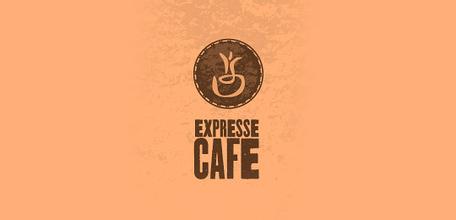Introduction of varieties of Grinding scale by taste treatment method for Flavor description of Brazilian Coffee Farm
Introduction of varieties of Grinding scale by taste treatment method for Flavor description of Brazilian Coffee Farm
Brazil is the world's largest coffee producer. But Brazil originally did not produce coffee. Coffee originated in Arabia and was introduced into Europe in the 18th century and was very popular. Later, the French specially shipped the coffee saplings to French Guiana, which was finally introduced into Brazil, and finally carried forward in Brazil. Don't forget the famous coffee in Brazil. Buying a few bottles and sending them home will be popular. Supermarkets and bakeries sell roasted and ground coffee, vacuum-packed products can be kept fresh, or paper bags of coffee can be bought at the airport.
Brazilians love coffee and are good at drinking coffee. Coffee with hot milk is a traditional breakfast drink throughout Brazil. Brazilians call breakfast "morning coffee" (cafedamanha). They drink coffee before going to work, during meetings, and often stand in front of a street cafe for a drink when walking down the street. In short, coffee is an indispensable source of energy for most Brazilians. Small black coffee, dark color, strong flavor, mellow and delicious, it is best to add a little more sugar, as the Brazilian folk song sings: "Coffee must be as black as the devil, as hot as hell, as pure as an angel, as sweet as love." When you arrive in Brazil, don't forget to taste the delicious "Coffee Sinio"!
The great economic crisis that broke out in 1929 sharply reduced the world consumption of coffee, which dealt a heavy blow to the Brazilian coffee plantation economy. Since then, the proportion of Brazilian coffee production in export earnings has plummeted. In the past 30 years, with the rise and development of Brazilian modern industry, especially steel, shipbuilding, automobile, aircraft manufacturing and other industries, the status of coffee in the national economy has declined year by year, but it is still one of the pillars of Brazil's economy. Brazil is still the world's largest coffee producer and exporter. Brazil makes full use of the tropical geographical environment and attaches importance to the production and sale of coffee, so that the output, export volume and per capita consumption of coffee have been ranked first in the world for many years, and have been known as the "kingdom of coffee". Coffee was introduced into Brazil after the 18th century. In 1727, coffee was introduced into Port Belem, Brazil from Guyana. Since then, it has settled in Antuku, Brazil, mainly in the southeast coastal areas of Brazil. Namely, Sao Paulo, Parana, San Esprito, Minas Gerais and other four states. From the end of the 18th century to the 1920s, during the heyday of Brazilian coffee production, Brazil accounted for 75% of the world's total coffee production. Over a long period of time, coffee accounted for 2% of Brazil's total export revenue, thus making Brazil a well-deserved "coffee kingdom".
Old bourbon coffee is grown on some estates in the Serrado district of Minas Greais state in southeastern Brazil. Old varieties of bourbon coffee grown on these estates, such as Capin Branco and Vista Allegre, are also sold on the market. Although they come from the same area, these coffees have their own characteristics. Capingblanco coffee is smoother than Vesta Allegre coffee, while Vesta Allegre coffee is strong and black, both of which have lower acidity. However, like all Brazilian coffee, they are most suitable for drinking when they are fresh and tender, because the older they are, the more acidic they are. These coffee growers have organized themselves into the Brazilian Special Coffee Association (the Speciality Coffee Association of Brazil).

Important Notice :
前街咖啡 FrontStreet Coffee has moved to new addredd:
FrontStreet Coffee Address: 315,Donghua East Road,GuangZhou
Tel:020 38364473
- Prev

Flavor description of boutique coffee beans in Panamanian jadeite manor introduction to the origin of taste treatment
Panamanian Emerald Manor Rose Summer boutique Coffee Bean Flavor description Taste treatment method Origin introduction Pokuite producing area, there are also many excellent manors, except the famous Emerald Manor, as well as Alida Manor, Aqaba Manor and so on are famous manors, all produce high-quality boutique coffee. And this is not only due to the superior ecological conditions of the Pokut region of Panama and the Baru fire.
- Next

Taste characteristics of Yejiaxuefei Coffee beans
Colombian coffee bean taste Yega Chuefei Coffee characteristic Flavor description Grinding scale introduction to espresso: deep-roasted coffee, significantly acidity Italian roasted coffee, smoother and slightly sweeter than espresso and with lower acidity. French roasted coffee: has a strong smoky taste and has a low almost imperceptible acidity. Concentrated baked coffee
Related
- Detailed explanation of Jadeite planting Land in Panamanian Jadeite Manor introduction to the grading system of Jadeite competitive bidding, Red bid, Green bid and Rose Summer
- Story of Coffee planting in Brenka region of Costa Rica Stonehenge Manor anaerobic heavy honey treatment of flavor mouth
- What's on the barrel of Blue Mountain Coffee beans?
- Can American coffee also pull flowers? How to use hot American style to pull out a good-looking pattern?
- Can you make a cold extract with coffee beans? What is the right proportion for cold-extracted coffee formula?
- Indonesian PWN Gold Mandrine Coffee Origin Features Flavor How to Chong? Mandolin coffee is American.
- A brief introduction to the flavor characteristics of Brazilian yellow bourbon coffee beans
- What is the effect of different water quality on the flavor of cold-extracted coffee? What kind of water is best for brewing coffee?
- Why do you think of Rose Summer whenever you mention Panamanian coffee?
- Introduction to the characteristics of authentic blue mountain coffee bean producing areas? What is the CIB Coffee Authority in Jamaica?

